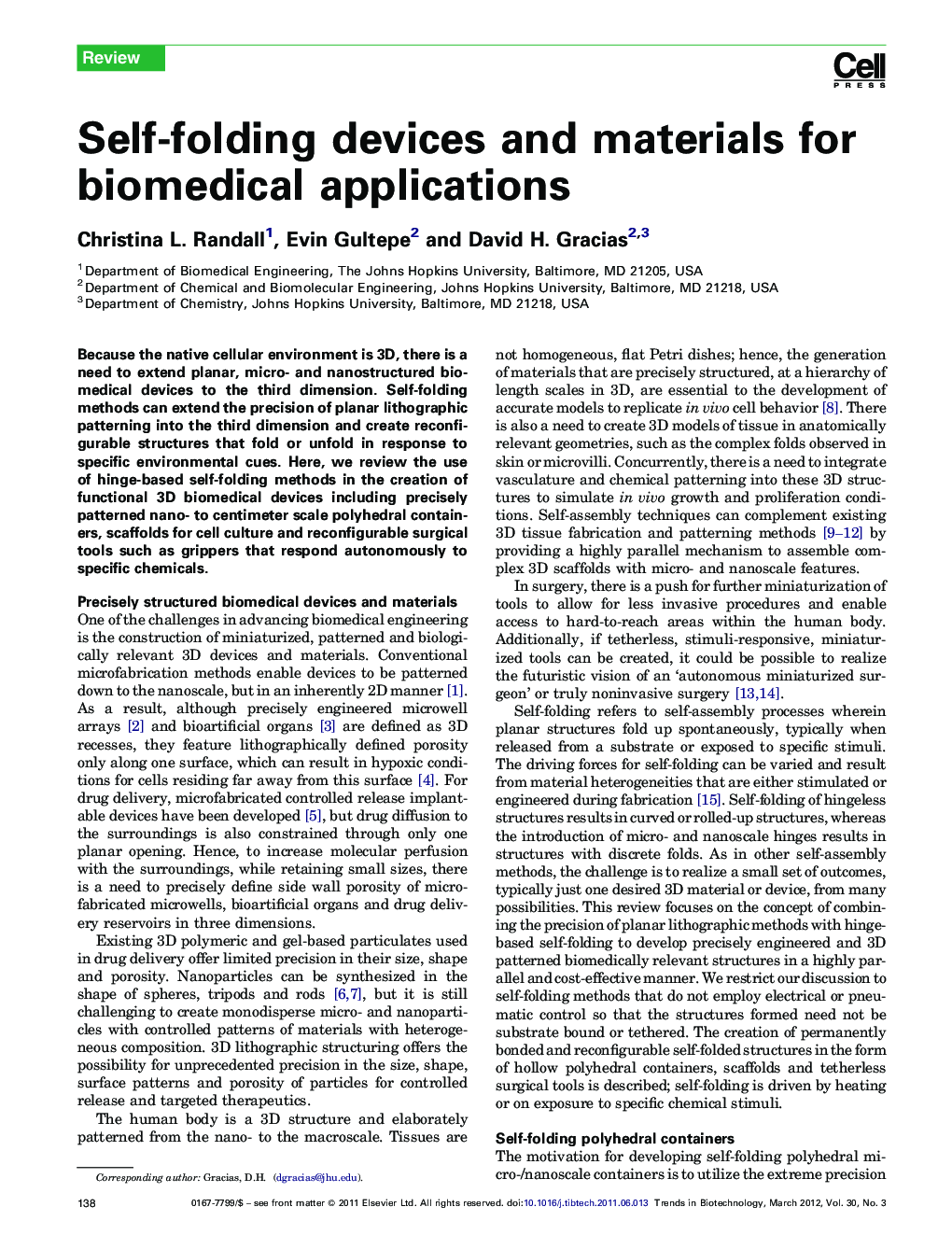| Article ID | Journal | Published Year | Pages | File Type |
|---|---|---|---|---|
| 37377 | Trends in Biotechnology | 2012 | 9 Pages |
Abstract
Because the native cellular environment is 3D, there is a need to extend planar, micro- and nanostructured biomedical devices to the third dimension. Self-folding methods can extend the precision of planar lithographic patterning into the third dimension and create reconfigurable structures that fold or unfold in response to specific environmental cues. Here, we review the use of hinge-based self-folding methods in the creation of functional 3D biomedical devices including precisely patterned nano- to centimeter scale polyhedral containers, scaffolds for cell culture and reconfigurable surgical tools such as grippers that respond autonomously to specific chemicals.
Related Topics
Physical Sciences and Engineering
Chemical Engineering
Bioengineering
Authors
Christina L. Randall, Evin Gultepe, David H. Gracias,
